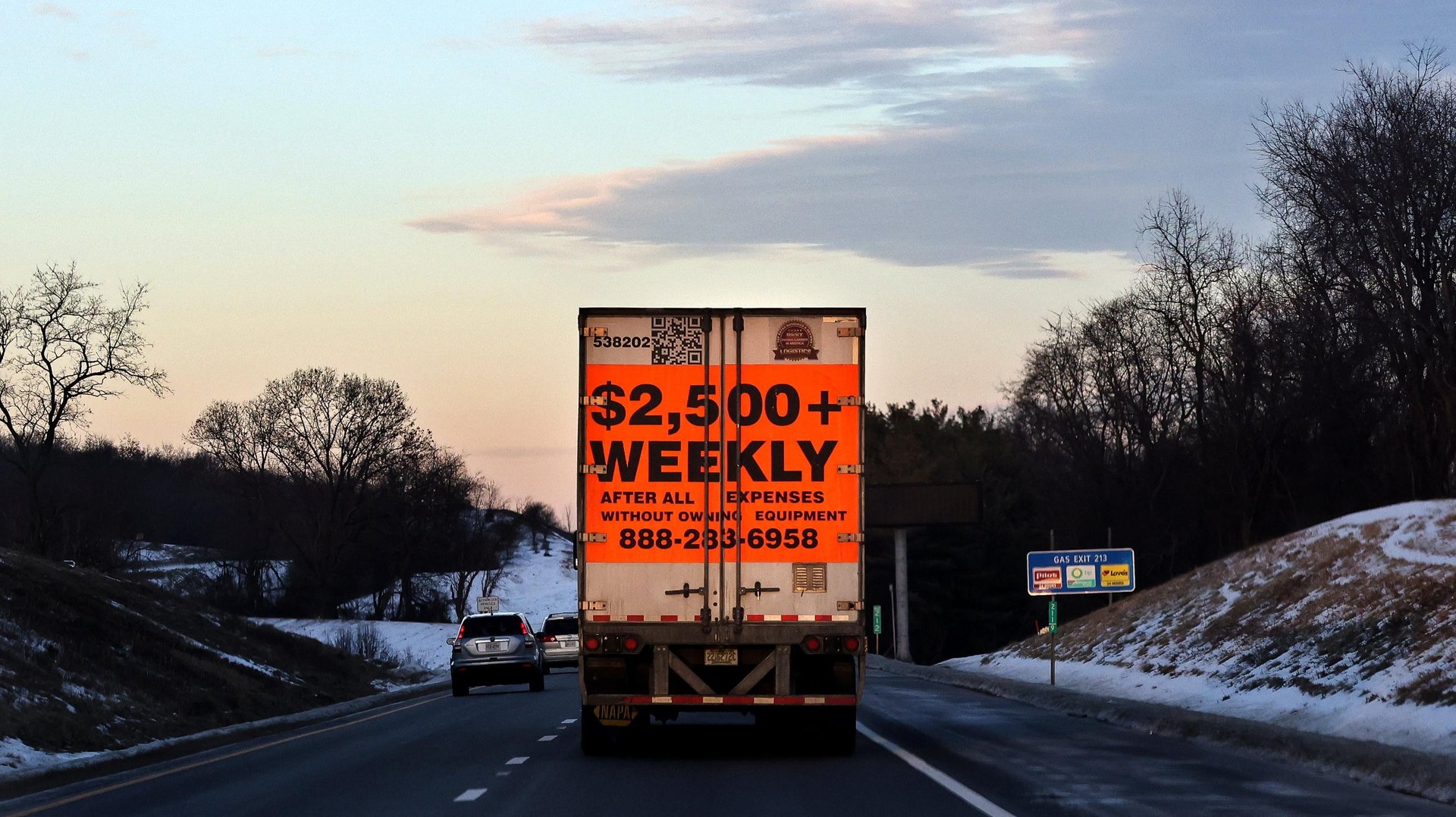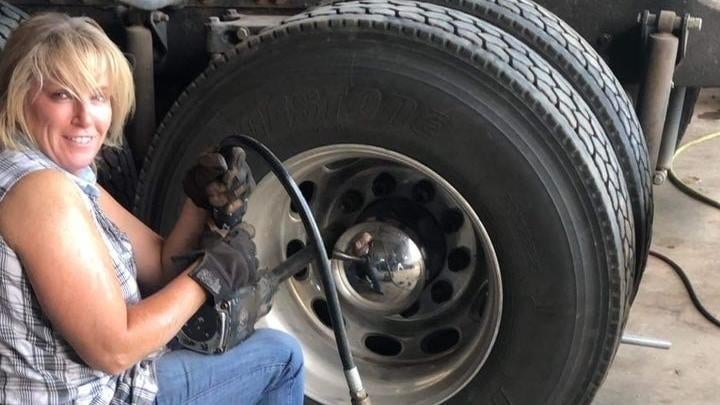Women are entering US truck-driving jobs in record numbers
Women are helping to close the driver shortage though barriers still remain

After a decade in healthcare, Chelsea Ferguson had enough. That’s when she turned to truck driving.
Having worked in critical care and hospice, Ferguson, 28, felt burned out. She was doing strenuous work cleaning patients and turning them over. She was on her feet some days for 16 hours. “After the pandemic and everything, [the work] kind of wore me out a lot, so I decided to take a break from it,” she said.

In January, she quit her job as a certified nursing assistant and headed back to school to get her commercial driver’s license in Arizona. Now she and her husband, who is also a truck driver, take turns driving a dry van trailer transporting goods like lumber and toilet paper across the country from their home base in Phoenix.
Ferguson is one of thousands of women who have recently flocked to this still very male-dominated field. The number of women employed in the truck transportation industry hit 1.6 million in October, a record since the US Bureau of Labor Statistics (BLS) started tracking the numbers in 1990. Women’s share of the trucking industry workforce is now at an all-time high of nearly 18%, mostly in truck-driving roles.
For decades, the trucking industry has had trouble retaining retaining workers. The sector is now short of around 80,000 drivers, which is an all-time high, according to an October report from the American Trucking Association.
Women are helping to fill in the gaps. Their share of jobs in the trucking industry also has risen as the rate of US labor-market participation overall has fallen for men of prime working age.
“If you can’t attract white men, which is what they used to attract, then you look for other groups you can attract,” said Michael Belzer, an economics professor at Wayne State University and a former truck driver. He said he’s skeptical of whether the job has gotten better.
In addition to having to cope with the demands of the job—including being away from family for long stretches and driving being taxing on the body—a lot of licensed truck drivers feel underpaid, although Ferguson said she makes about $9,000 more than in her previous job.
In the US, the average salary of truck transportation workers is about $54,000 a year, according to the BLS. Drivers are not paid while sitting in traffic or waiting for a customer to unload the haul from the truck.
Historically, there are many more reasons why women don’t enter the field. The trucks are hard to steer, for example, and sexual harassment and assault on the job remain real risks.
So why is the industry suddenly attracting women in record numbers?
Fleeing burnout in the healthcare sector
“So a few years ago, I would have said it was women coming in from service jobs,” said Ellen Voie, president of the Women in Trucking Association. “But just in the past year, more and more women have come in from the healthcare industry, whether it’s nursing homes or hospitals. It’s just unbelievable.”
The solitary nature of the gig also is attracting workers to the job.
“A lot of people formerly were doing some sort customer service and [decided] they just can’t deal with the public anymore,” said Desiree Wood, president of Real Women in Trucking, an advocacy group for women truckers.
Though a detraction to some, traveling on the job is a perk to others. Some drivers might park their trucks at a rest stop and call up an Uber to explore the area, she said. And anecdotally, she finds that more women today see truck driving as a good alternative to other jobs not requiring a college degree.
“If I come from a family where I can’t go to school, how do I get a job better than McDonald’s so I could buy my own car and buy my own house? And what are your options? Be a stripper, a bartender, be a cocktail waitress,” said Wood. “There are not really that many things that are available to you.”
Women are also increasingly getting introduced to the job, whether due to family or friends in the industry or TikTok videos of women driving trucks, said Wood.
Will the trend of women entering truck-driving jobs last?
The question is whether this high-turnover industry will be able to retain these women.
Connie August said that when she started driving trucks in 2008, men would scoff at her and grease her door latches. Sometimes they would leave condoms and smear mayonnaise inside her truck if the door wasn’t locked. “You had to toughen up and have a sense of humor and heightened awareness of surroundings—and not take safety for granted,” said August, who is based in North Dakota and drives regionally.

Changes are slowly being made, though. August, 49, said that showers and bathrooms are being kept cleaner, and highway patrol men often check in with her when her truck is parked.
“From when I started to now, I have to say the whole trucking industry atmosphere has gotten much more agreeable—a lot better for women truckers,” said August. “Etiquette on the road has gotten better. People in the workplace have treated lady truckers with more respect.”
Wood, who became a truck driver after her kids grew up, notes that she’s seeing more women in their 20s enter the field. “These young girls are a lot more outspoken than these older women that were kind of like, ‘Oh, don’t rock the boat’,” said Wood, who is 58 and no longer a truck driver.
She suspects women are also benefiting from the cool factor of being female and in the field. “I mean, if you’re a woman truck driver,” she said, “you’re badass.”